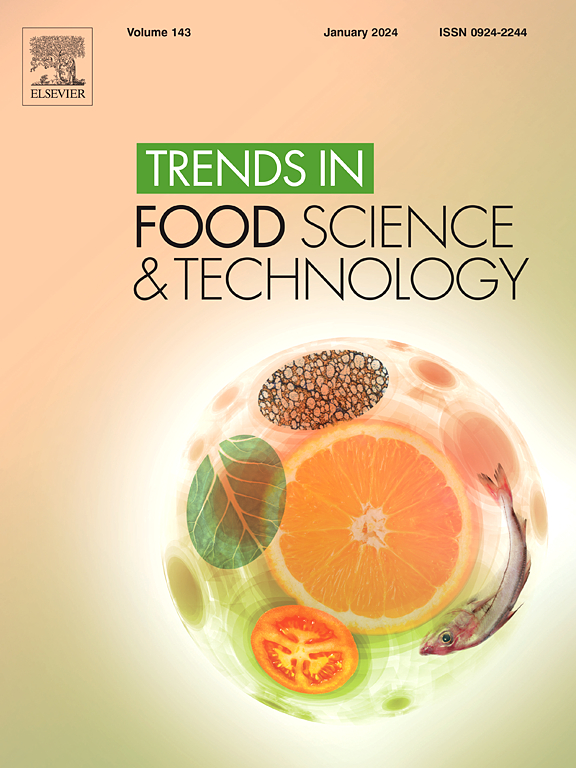Advancing food safety with SERS: The role of noble metal nanomaterials in detecting food contaminants
IF 15.1
1区 农林科学
Q1 FOOD SCIENCE & TECHNOLOGY
引用次数: 0
Abstract
Background
Food contaminants, such as harmful microbes, pesticide residues, heavy metals, and illegal additives, are a significant public health concern. Traditional detection methods are effective but often slow and require complex equipment, which limits their use in real-time monitoring and rapid response. Therefore, there is an urgent need for innovative technologies that can provide rapid, sensitive, and specific detection of food contaminants.
Scope and approach
This review examines the use of noble metal nanomaterials (NMNs) in food safety, particularly in Surface-enhanced Raman scattering (SERS) for detecting various contaminants. It focuses on the synthesis, properties, and application of NMNs, which have unique optical properties like localized surface plasmon resonance (LSPR) that enhance Raman scattering. The review also discusses the integration of NMNs into SERS substrates and their application in detecting food contaminants, as well as future perspectives and challenges.
Key findings and conclusions
NMNs provide advantages in SERS techniques, such as a high surface-to-volume ratio that creates hot spots for enhanced Raman signals, and tunable size, shape, and composition for optimized performance. New synthesis methods allow for large-scale production and integration into practical detection systems. NMNs in SERS can detect contaminants at much lower concentrations than conventional methods. However, there are challenges regarding the reproducibility and stability of SERS substrates and the development of robust analytical protocols for complex food matrices. Future research may explore novel nanostructures, miniaturized SERS sensors, integration with machine learning, and expanding the range of detectable contaminants and toxins.
求助全文
约1分钟内获得全文
求助全文
来源期刊

Trends in Food Science & Technology
工程技术-食品科技
CiteScore
32.50
自引率
2.60%
发文量
322
审稿时长
37 days
期刊介绍:
Trends in Food Science & Technology is a prestigious international journal that specializes in peer-reviewed articles covering the latest advancements in technology, food science, and human nutrition. It serves as a bridge between specialized primary journals and general trade magazines, providing readable and scientifically rigorous reviews and commentaries on current research developments and their potential applications in the food industry.
Unlike traditional journals, Trends in Food Science & Technology does not publish original research papers. Instead, it focuses on critical and comprehensive reviews to offer valuable insights for professionals in the field. By bringing together cutting-edge research and industry applications, this journal plays a vital role in disseminating knowledge and facilitating advancements in the food science and technology sector.
 求助内容:
求助内容: 应助结果提醒方式:
应助结果提醒方式:


